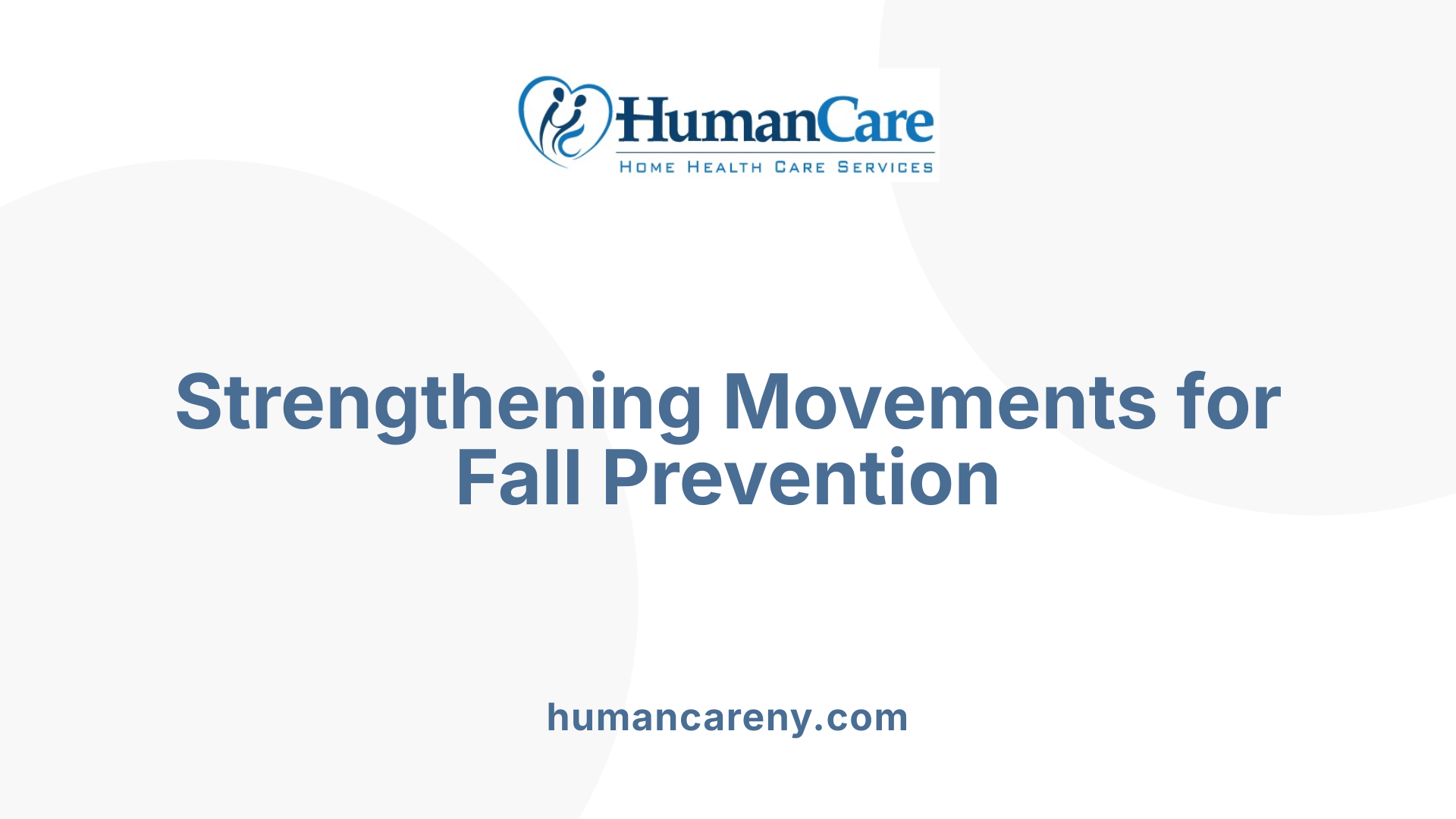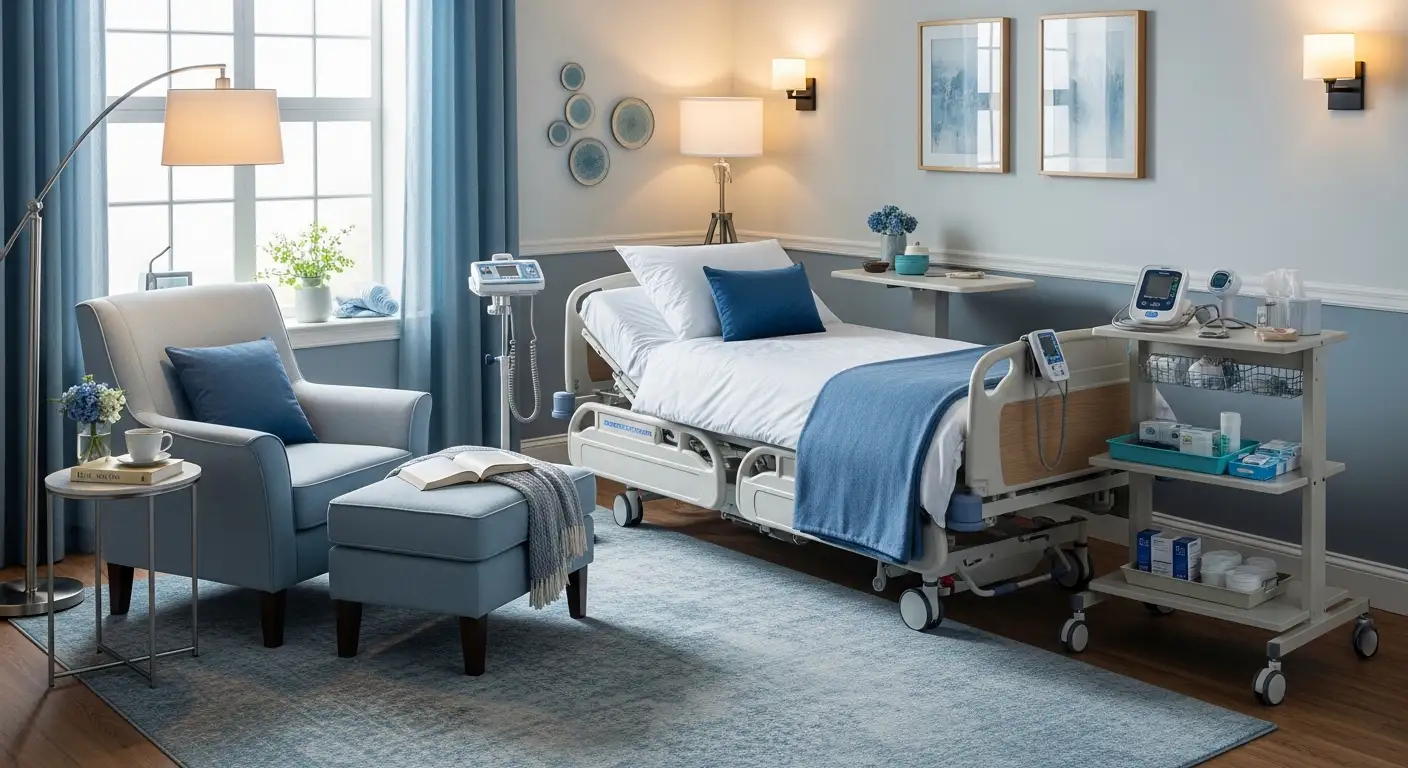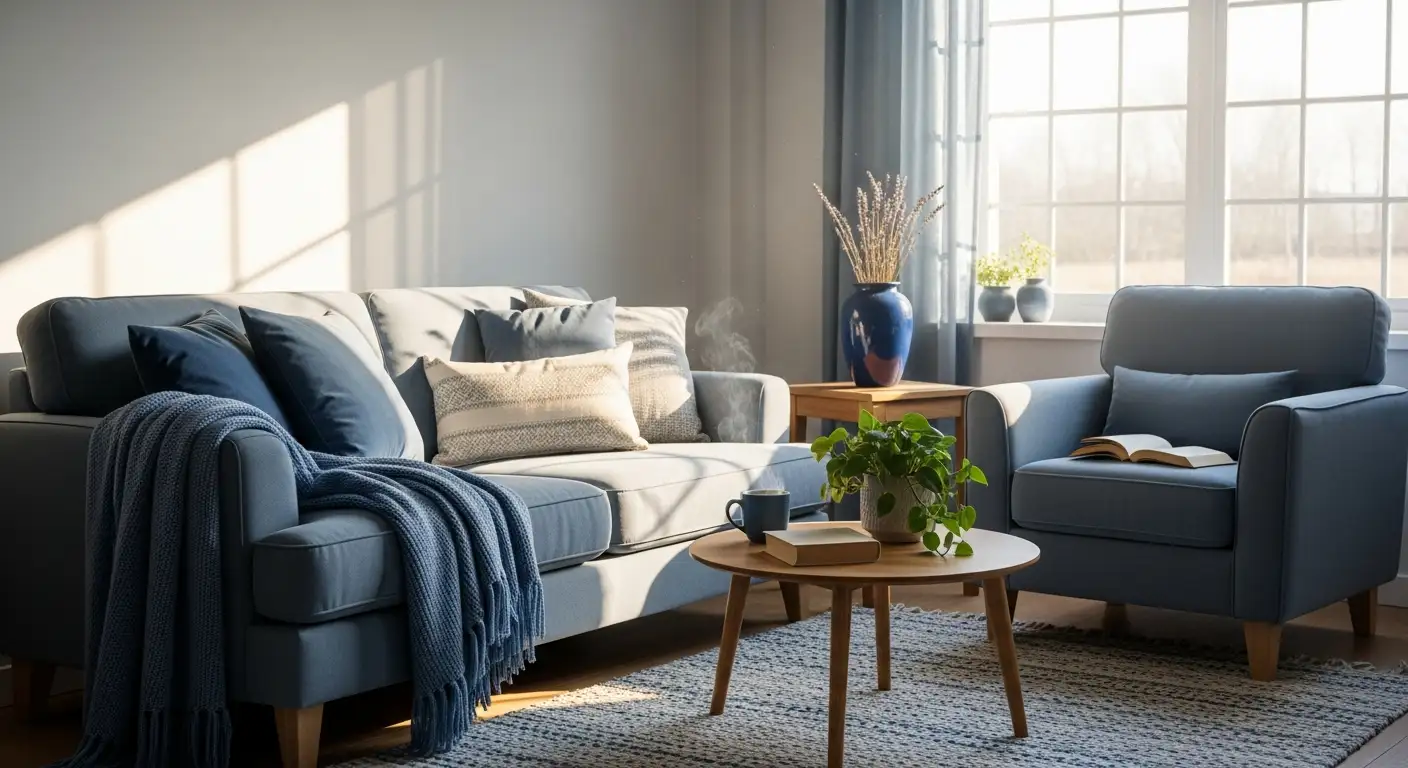Understanding the Role of Companion Caregivers in Home Safety
As seniors choose to age in place, maintaining safety within their homes becomes a priority. Companion caregivers play a vital role in assessing risks and implementing modifications that allow elderly individuals to live comfortably and securely in familiar surroundings. This article explores how these caregivers assist seniors by evaluating home environments, recommending safety improvements, and providing hands-on support to prevent accidents and enhance quality of life.
Comprehensive Home Safety Assessments by Companion Caregivers

Conducting Evaluations of Home Environments
Companion care providers begin by conducting thorough evaluations of the senior's home environment. This process includes examining each room and common areas to identify potential hazards that could lead to falls or injuries. These evaluations assess lighting, flooring, furniture placement, and accessibility to ensure the space supports safe mobility.
Identifying Fall Risks and Hazards
During the assessment, caregivers look for specific fall risks such as loose rugs, cluttered walkways, slippery surfaces, and inadequate lighting. Special attention is given to high-risk areas like bathrooms and stairways where falls are more common. Recognizing these hazards early allows caregivers to address them effectively.
Recommending Safety Modifications
After identifying risks, companion caregivers suggest modifications tailored to the senior’s needs. Common recommendations include installing grab bars in bathrooms, applying non-slip flooring, improving lighting, and rearranging furniture to create clear, unobstructed paths. These changes create a safer living space and reduce the likelihood of accidents.
Using Assessment Tools to Tailor Care Plans
Caregivers employ various assessment tools to evaluate Activities of Daily Living (ADLs) and other senior needs. These tools help determine the level of assistance required and guide the customization of care plans. By aligning safety measures with individual capabilities, caregivers ensure that interventions are both effective and respectful of the senior's preferences.
This comprehensive approach to home safety assessments by companion caregivers not only identifies and mitigates risks but also supports seniors in maintaining independence while aging safely at home.
Fall Prevention Education and Mobility Support

How do caregivers educate seniors and families on fall prevention?
Caregivers play a vital role in educating both seniors and their families about effective fall prevention strategies. This includes teaching proper techniques for using mobility aids like canes, walkers, and wheelchairs, fostering awareness about balance maintenance and cautious movement.
What is the role of assistive devices in fall prevention?
Assistive devices are essential tools for enhancing safety and independence. Caregivers encourage seniors to use these devices consistently and correctly, ensuring they remember to bring and rely on them during daily activities.
How do caregivers assist with safe mobility and transfers?
Companion caregivers actively support seniors in navigating their living spaces and safely transferring from bed to chair or other positions. This hands-on help significantly lowers the risk of falls during these vulnerable movements.
Which environmental hazards are addressed to reduce falls?
Comprehensive home assessments allow caregivers to identify and recommend modifications to reduce fall risks. Particularly hazardous areas, such as bathrooms, receive attention with the installation of grab bars, non-slip flooring, and improved lighting to create a safer environment.
By combining education, practical assistance, and targeted home adjustments, companion caregivers greatly contribute to preventing falls and promoting senior safety at home.
Promoting Use and Proper Handling of Assistive Devices

Encouraging Regular Use of Canes, Walkers, and Wheelchairs
Companion caregivers play a vital role in promoting the consistent use of mobility aids such as canes, walkers, and wheelchairs. These devices are essential for many seniors to maintain independence and prevent falls. Caregivers not only remind seniors to use these aids but also motivate them by explaining the safety benefits and how these tools can improve their freedom at home.
Assisting Seniors in Remembering and Properly Using Devices
Many seniors may forget to use their assistive devices or may feel unsure about how to use them correctly. Caregivers offer hands-on assistance, demonstrating proper techniques and encouraging safe handling. This support helps seniors feel more comfortable and confident while using their mobility aids.
Improving Mobility and Confidence With Device Support
With caregiver assistance, seniors gradually build strength and balance through regular movement supported by assistive devices. This leads to increased confidence in navigating their homes safely. By helping seniors use these tools correctly, caregivers reduce the risk of falls and promote greater mobility and independence.
Key Bathroom Safety Modifications to Reduce Fall Risks

Installing grab bars and non-slip flooring
Bathroom falls are a common risk for seniors, but strategic modifications can significantly enhance safety. Installing grab bars near the toilet and inside the shower or bathtub provides sturdy support during transfers and movements, reducing the likelihood of slips and falls. Equally important is the use of non-slip flooring or mats, which help prevent slipping on wet surfaces.
Improving lighting in bathroom spaces
Proper lighting is essential in bathrooms, as poor visibility can increase fall risk. Bright, evenly distributed lighting helps seniors better gauge distances and spot potential hazards like water puddles or uneven flooring. Motion-sensor night lights can further support safe nighttime bathroom use without the need to fumble for switches.
Utilizing bathing aids for safer hygiene routines
Bathing aids such as shower chairs, hand-held shower heads, and bath benches allow seniors to maintain personal hygiene safely and comfortably. These devices provide stability and reduce the need for standing for long periods, lessening the chances of losing balance. Caregivers assist seniors in selecting and correctly using these aids, promoting independence and fall prevention.
Together, these bathroom modifications form a critical part of companion care aimed at fostering safe, accessible home environments for aging individuals.
Support for Physical Activity to Enhance Strength and Stability

How do companion caregivers support physical activity through tailored exercise programs like chair exercises and water aerobics?
Companion caregivers play an important role in promoting tailored exercise programs designed to enhance seniors' strength and stability. They support activities such as chair exercises, walking routines, and even water aerobics, which cater to individual mobility levels. These exercises are chosen to be safe, practical, and effective in improving muscle tone and balance.
In what ways do caregivers encourage regular movement among seniors?
Caregivers encourage seniors to engage in consistent physical activity by providing reminders, helping them set achievable goals, and offering assistance during exercises. Their involvement increases motivation and ensures that seniors perform exercises correctly, reducing the risk of injury. This ongoing encouragement helps seniors maintain a routine that supports their overall mobility.
What is the connection between improved strength and reduced fall risk in seniors?
Improved strength directly contributes to better balance and coordination, essential factors in fall prevention. Regular exercise strengthens muscles, enhances joint flexibility, and boosts confidence in movement. As seniors gain greater physical stability, their risk of falls decreases significantly, supporting safer aging at home.
Table: Overview of Physical Activity Support by Companion Caregivers
| Activity Type | Caregiver Role | Benefits for Seniors |
|---|---|---|
| Chair exercises | Assistance and supervision | Improves upper and lower body strength |
| Walking routines | Motivation and safety oversight | Enhances balance and cardiovascular health |
| Water aerobics | Facilitation and encouragement | Provides low-impact strengthening and flexibility |
By fostering regular, customized physical activities, companion caregivers help seniors build the strength and stability necessary to move safely in their homes, reducing their fall risk and enhancing quality of life.
Assistance with Activities of Daily Living to Identify and Address Safety Risks

Helping with Bathing, Dressing, and Mobility
Companion caregivers play a vital role in assisting seniors with Activities of Daily Living (ADLs) such as bathing, dressing, and mobility. This hands-on support not only helps maintain seniors' personal hygiene and comfort but also offers caregivers the opportunity to closely observe how seniors navigate their environment.
Observing and Reporting Home Hazards or Hygiene Concerns
During daily assistance, caregivers are well-positioned to identify potential hazards like slippery floors, cluttered pathways, or poor lighting that could contribute to falls. They also notice changes in hygiene that could signal health issues or increasing care needs. Prompt reporting of these observations allows for early intervention, minimizing risks and enhancing the senior's safety.
Guiding Necessary Home Modifications Based on Daily Needs
Based on thorough assessments of seniors' ADLs and observed challenges, caregivers recommend practical home modifications. These might include installing grab bars, adding non-slip mats, or rearranging furniture to improve movement and reduce fall hazards. Tailoring these changes to the individual's daily activities ensures a safer, more supportive living environment that promotes independence and well-being.
Comprehensive In-Home Support Beyond Safety Modifications

Providing Social Support and Companionship
Companion caregivers play a crucial role in offering social support and companionship to seniors, which greatly enhances their overall well-being. Loneliness and social isolation can negatively affect both mental and physical health, so having a friendly presence in the home helps seniors feel connected and valued.
Helping with Transportation, Meal Preparation, and Housekeeping
In-home caregivers often assist seniors with essential daily tasks such as transportation to appointments, meal preparation, and light housekeeping. These services not only foster independence but also create a safer, more organized living environment. Reliable transportation ensures seniors can maintain their social engagements and health visits, while nutritious meals contribute to better physical health.
Enhancing Home Stability and Overall Well-being
By combining safety-focused modifications with supportive services, companion caregivers help create a stable and secure home environment. This holistic approach addresses physical safety, emotional health, and practical needs, supporting seniors in aging comfortably in their own homes. The integration of companionship and assistance with daily routines significantly promotes quality of life and peace of mind for both seniors and their families.
Collaborating with Family Caregivers to Preserve Dignity and Safety

Supporting Family Caregivers
Family caregivers often play a vital role in the daily lives of seniors, but they sometimes need additional professional help to ensure both safety and dignity at home. Companion care providers work alongside families, offering expert assistance that complements the care given by loved ones. This collaboration helps families manage the complexities of senior care while ensuring their relatives receive the support necessary for a safe living environment.
Tailoring Care Plans Based on Senior Evaluations
Comprehensive evaluations of seniors’ needs and their abilities to perform Activities of Daily Living (ADLs) form the basis for customized care plans. Caregivers assess factors like mobility, hygiene, and potential fall risks to recommend appropriate measures. This individualized approach ensures that seniors receive precisely the assistance they need, avoiding unnecessary restrictions while addressing safety concerns.
Balancing Independence with Safety Needs
A primary goal in home care is to maintain seniors’ independence while minimizing risks. By educating families on fall prevention and encouraging the use of assistive devices such as walkers or grab bars, caregivers help seniors stay active and confident. Additionally, by closely monitoring safety hazards and promoting tailored exercises, caregivers support seniors in preserving their autonomy without compromising their well-being.
The Integral Role of Companion Caregivers in Safe Aging at Home
Companion caregivers provide more than assistance with daily tasks; they are instrumental in creating a safer living environment tailored to each senior’s unique needs. Through thorough assessments, education, mobility support, and collaboration with families, these caregivers help reduce fall risks and enable seniors to maintain independence and dignity. Their role is essential in supporting the growing preference for aging in place, ensuring that homes become not only comfortable but also secure havens for the elderly.



